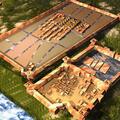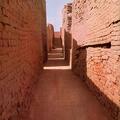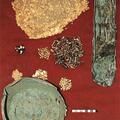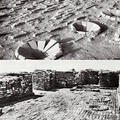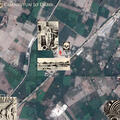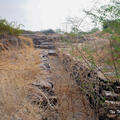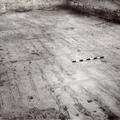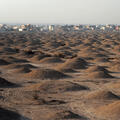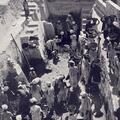Kalibangan
"The site Kalibangan - literally 'black bangles' - derives its name for the dense distribution of the fragments of black bangles which were found at the surface of its mounds. . ." writes Madhu Bala. "Evidence of this period consists of a citadel area over the 1.6 metre-thick early Harappan deposit in KLB-1 (the western mound of the site [Image 1]), a chessboard pattern 'lower city' in KLB-2 (the lower and larger eastern mound), and a mound full of fire altars in a much smaller mound further east (KLB-3).
The citadel complex of KLB-1 is roughly a parallelogram (240 by 120 metres) divided into

